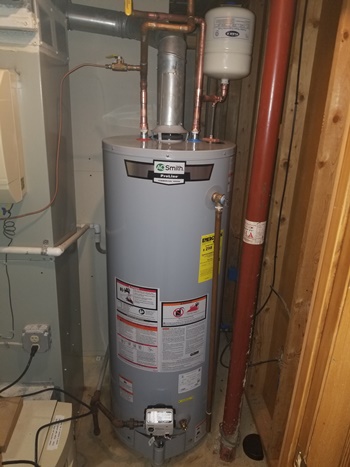Ways to Extend the Life of Your Home's Hot Water System By Maintenance
Ways to Extend the Life of Your Home's Hot Water System By Maintenance
Blog Article
This great article below pertaining to Tips For Maintaining Your Hot Water Heater is absolutely interesting. Check it out for your own benefit and decide what you think about it.

Warm water is important for daily convenience, whether it's for a refreshing shower or cleaning dishes. To ensure your warm water system runs efficiently and lasts much longer, routine upkeep is essential. This post provides functional tips and insights on just how to preserve your home's warm water system to avoid interruptions and pricey repairs.
Introduction
Keeping your home's warm water system may appear difficult, yet with a few easy actions, you can guarantee it operates efficiently for several years to come. This guide covers whatever from recognizing your hot water system to DIY upkeep pointers and understanding when to call in professional assistance.
Value of Keeping Your Hot Water System
Normal upkeep not just prolongs the life-span of your warm water system but likewise ensures it runs efficiently. Disregarding upkeep can result in reduced performance, higher power bills, and also early failing of the system.
Indicators Your Warm Water System Demands Upkeep
Recognizing when your warm water system requires focus can protect against significant concerns. Look out for signs such as inconsistent water temperature, strange noises from the heater, or rusty water.
Purging the Water Heater
Flushing your water heater gets rid of debris build-up, boosting performance and extending its life.
Monitoring and Changing Anode Rods
Anode poles avoid rust inside the tank. Examining and replacing them when worn out is essential.
Complex Issues Calling For Specialist Assistance
Examples include significant leakages, electric issues, or if your water heater is consistently underperforming.
Regular Specialist Maintenance Advantages
Expert maintenance can consist of complete assessments, tune-ups, and guaranteeing compliance with safety and security criteria.
Evaluating and Changing Temperature Setups
Changing the temperature setups makes sure optimal performance and safety and security.
DIY Tips for Maintenance
You can do a number of upkeep jobs yourself to maintain your warm water system in top problem.
Checking for Leakages
On a regular basis examine pipelines and links for leaks, as these can bring about water damage and greater expenses.
Understanding Your Warm Water System
Prior to diving into upkeep tasks, it's handy to comprehend the standard elements of your warm water system. Usually, this includes the water heater itself, pipes, anode poles, and temperature controls.
Month-to-month Maintenance Tasks
Routine month-to-month checks can assist catch minor concerns before they rise.
Testing Stress Alleviation Valves
Evaluating the pressure safety valve guarantees it works appropriately and avoids too much stress build-up.
Insulating Pipes
Shielding warm water pipes minimizes heat loss and can save energy.
When to Call an Expert
While do it yourself maintenance is valuable, some issues call for professional experience.
Final thought
Normal maintenance of your home's warm water system is essential for effectiveness, long life, and cost savings. By complying with these tips and recognizing when to seek expert aid, you can ensure a trustworthy supply of warm water without unanticipated disturbances.
How to Maintain an Instant Hot Water Heater
Before tinkering with your hot water heater, make sure that it’s not powered on. You also have to turn off the main circuit breaker and shut off the main gas line to prevent accidents. Also turn off the water valves connected to your unit to prevent water from flowing into and out of the appliance. 2. When you’re done, you have to detach the purge valves’ caps. These look like the letter “T†and are situated on either side of the water valves. Doing so will release any pressure that has accumulated inside the valves while at the same time avoid hot water from shooting out and burning your skin. 3. When the purge valves’ caps are removed, you have to connect your hosing lines to the valves. Your unit should have come with three hoses but if it didn’t, you can purchase these things from any hardware or home repair shops. You can also get them from retail stores that sell water heating systems. Read the user’s manual and follow it to complete this task properly. When the hosing lines are connected, open the purge port’s valves. 4. You should never use harsh chemical cleaners or solutions when cleaning your unit. Make use of white vinegar instead. It should be undiluted and you’ll probably use about 2 gallons. 5. Now flush your water heater. This task should probably take about 40 minutes. We can’t give you specific directions for this because the procedure is carried out depending on the type, model and brand of your heater. With that being said, refer to the user’s manual. 6. When you’re done draining the unit, you have to turn off the purge port valves again. Remove the hosing lines that you earlier installed on each of the water valves. Put the valve caps (purge port) back in their respective places and be very careful so as not to damage the rubber discs that are found inside these caps. 7. Now that everything’s back in place, check your user’s manual again to find out how to reactivate your water heating system. 8. Once it is working, turn one of your hot water faucets on just to let air pass through the heater’s water supply pipes. Leave the tap on until water flows smoothly out of it. https://www.orrplumbing.com/blog/2014/september/how-to-maintain-an-instant-hot-water-heater/

Do you like reading about What Kind of Maintenance Do Water Heaters Need?? Try to leave feedback down the page. We will be delighted to see your opinions about this posting. We hope to see you back again later on. So long as you enjoyed our blog post plz do not forget to pass it around. Many thanks for your time spent reading it.
Call Today Report this page